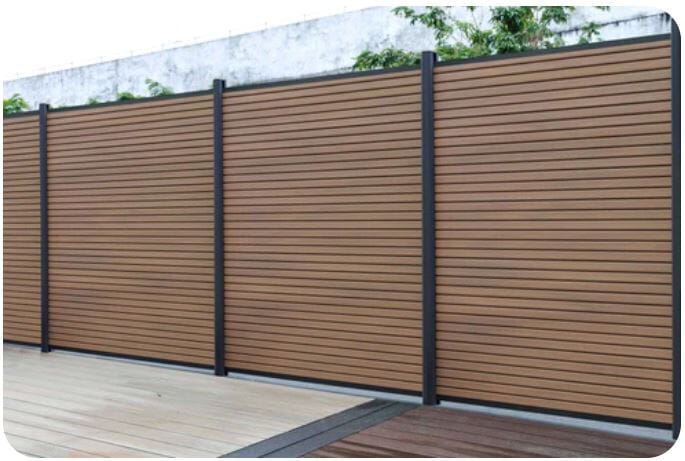Preparing Your Yard for Spring with Composite Fencing and Garden Beds
As the snow melts and the grass turns green, you'll need to do some yard prep work to ensure a great spring and summer. Here in 2025, composite fence and garden bed materials have become a popular choice for many reasons, including that they make it much easier to get your yard ready. If you're looking to replace your existing fences and garden beds or install new ones, here are some of the reasons you should use composite materials.
Why Choose Composite Fencing for Spring Yard Prep?
- Weather-Resistant Durability: Composite fencing holds up much better against harsh winter conditions than wood, vinyl and steel. This makes it ready for spring year after year without repairs or repainting.
- Enhanced Curb Appeal: The sleek, modern design options of composite fencing, such as wood-look finishes and customizable colors, boost the aesthetics of your home and can even enhance property value.
- Privacy and Security: Composite fencing provides the perfect balance of privacy and durability. It will keep kids, pets and gardens secure while preventing nosy neighbors and passersby from watching your every move.
- Eco-Friendly Benefits: Many composite fences are made from eco-conscious materials such as sustainably sourced wood fibers and recycled plastic. This makes them a smart environmental choice that also outperforms other materials.
- Trendy 2025 Designs: Popular composite fencing trends like horizontal slat fencing, dual-tone finishes and textured panels offer a contemporary look that complements your home and other yard features.

Preparing Your Yard with Composite Raised Garden Beds
Benefits of Raised Garden Beds
Regardless of the material, raised garden beds offer many advantages. They're easier to maintain and weed, they improve drainage for plants and they let you control soil quality and reduce pests. Raised beds also offer easier plant access and can be placed on patios or balconies.
Why Composite Garden Beds?
Unlike traditional wooden beds, composite beds are rot-resistant. This makes them long-lasting and low maintenance, which is ideal for busy gardeners. They're also available in sleek designs that complement composite fencing.
Spring Planting Tips
Even with a composite bed, you'll still need to prepare your garden. Get it started with early spring crops and flowers that thrive in cooler weather. These include lettuce, spinach, carrots, broccoli, daffodils, tulips, primrose and pansies. Before planting, you'll need to prepare the soil by adding compost, testing pH levels and mixing in the right nutrients for optimal growth.

How to Coordinate Composite Fencing and Garden Beds
- A Unified Design: Try to choose fencing and garden beds with matching or complementary colors and finishes to create a cohesive yard design.
- Functionality Meets Style: If you live in an area with a lot of wind, use fencing as a windbreak to protect plants in garden beds from harsh spring winds so they can take root.
- Other Design Layout Tips:
- Position garden beds along fences and pathways or in corners to optimize space and create visually appealing, productive zones.
- Use fencing as a backdrop for climbing plants or trellises.
- If you have multiple beds, place them 2-3 feet apart to offer access to each without creating sprawl.

